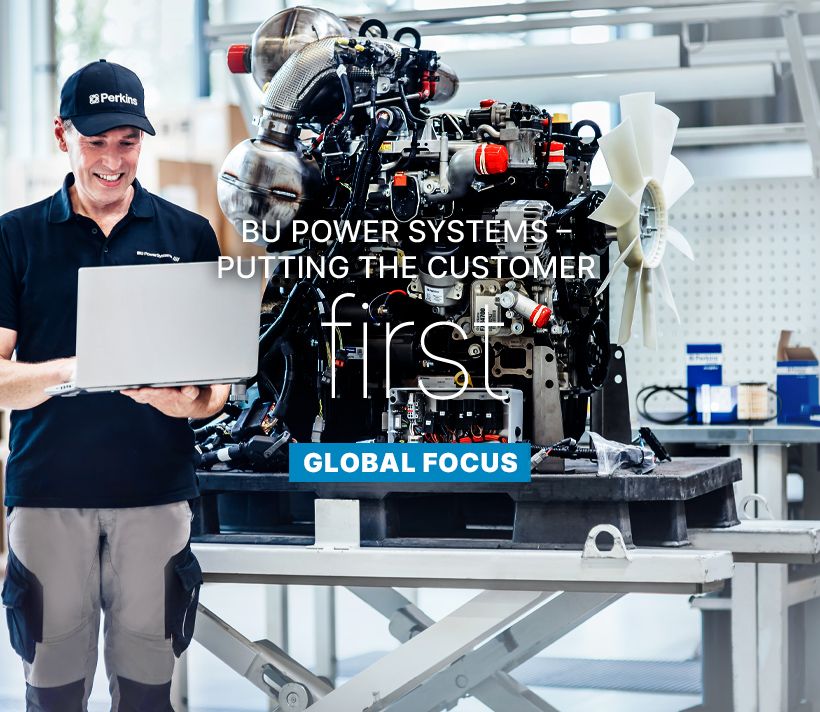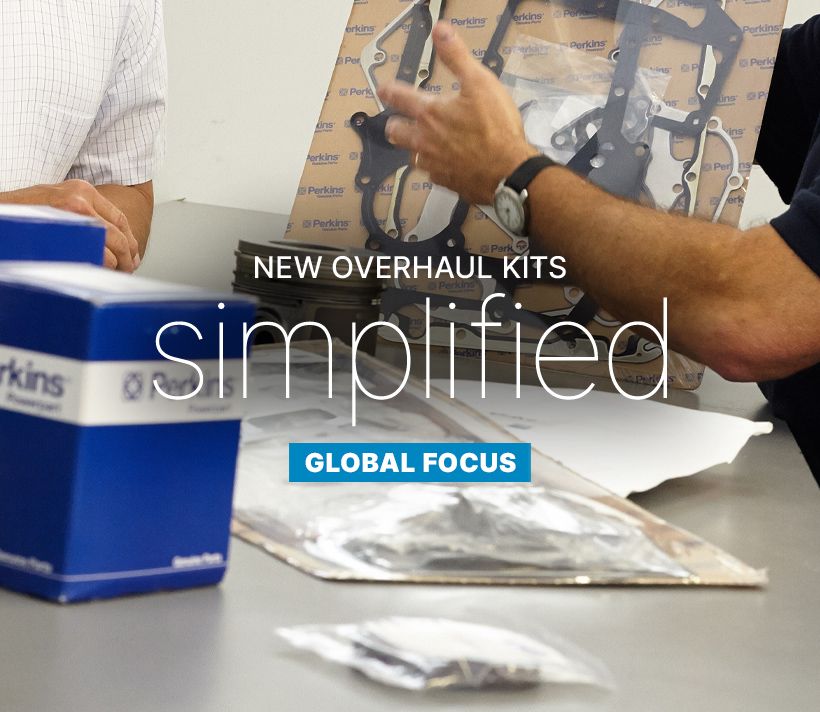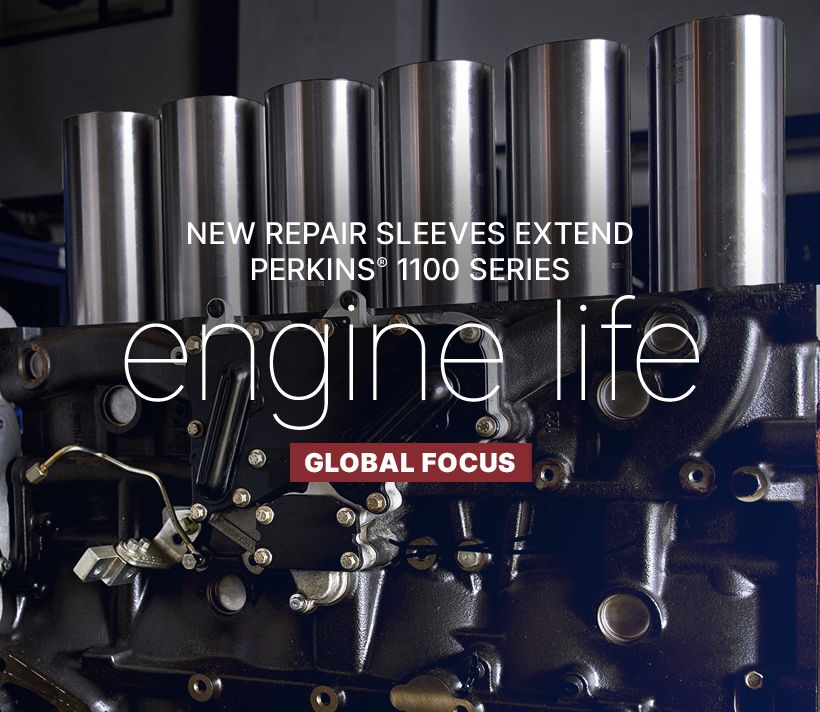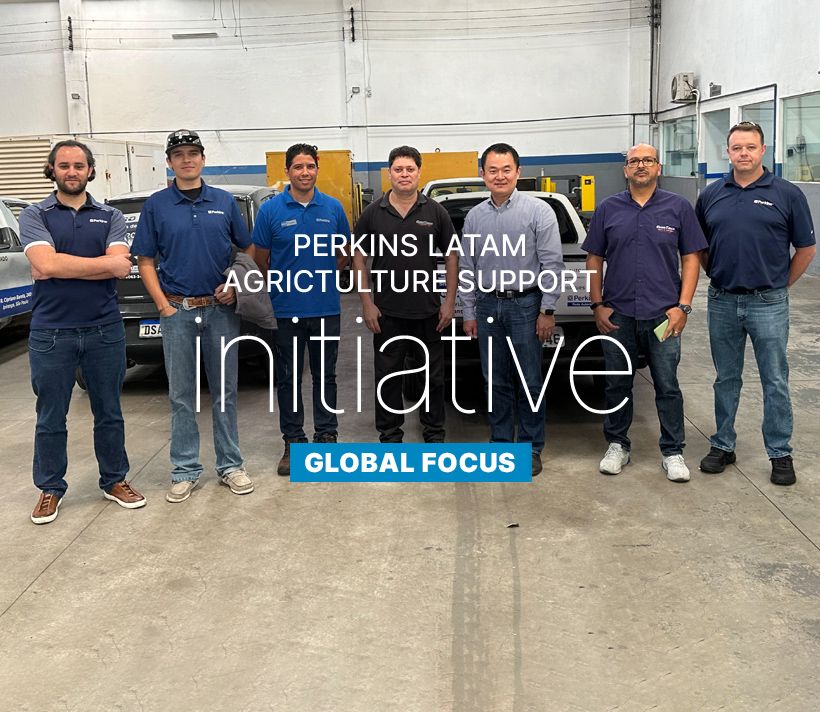Precision insights into machine performance that no-one else has, being informed of an issue before even the worksite knows about it, and identifying (and resolving) minor issues before they become major?
Who wouldn’t say yes to having all the above?
That’s the thinking behind Perkins Connectivity and Condition Monitoring, a new service from Perkins that has finally moved from vision to reality.
“It’s all about bringing to OEMs in multiple sectors the ability to minimise their total cost of ownership (TCO) and machine downtimes, and to boost overall efficiencies in machine management,” explained Jessica Langley, EAME marketing consultant at Perkins.
“There’s so much we can do to improve lifecycle management in the off-highway sector, if we’ve access to data that shows what engines are doing and how they’re performing,” she added.
Talking at a recent press briefing event in London, Jessica said the objective of the new service is to extend further Perkins’ renowned reputation for reliability and longevity, taking advantage of modern communications and data collection abilities to transform how businesses manage and operate their engines.
“This is about being ahead of the curve,” she enthused, “both for end-users and OEMs alike.”
Real-time monitoring of engine performance, she noted, opens up a whole new world of predictive and preventative maintenance.
“Imagine enabling service engineers to turn up at a worksite, already carrying the correct parts. There’s no time wasted in diagnosing the problem; they already know where the fault lies.
“Empowering a service team with such ‘second sight’ powers means they’re more likely to be able the fix the issue successfully first time.
“That in turn leads to fewer major breakdowns and faster resolutions.
“If you’re an OEM, that’s an offering that generates a big spike in brand loyalty. And as Perkins itself knows well, with increased brand loyalty comes increased customer retention.”
Perkins has already rolled out the system with several OEMs, primarily in the electric power, material handling and construction sectors. Early reports show they are reaping the benefits, Jessica revealed.
“Dealers are saving a lot of time, because the real-time monitoring and fault-identification promotes more efficient planning. They’re also improving their relationships with their own customers, who are avoiding major breakdowns and seeing a more joined-up, more integrated service.”
Kevin Walsh, Perkins digital business development manager, described how the architecture that supports the new service is built around efficient data sharing.
“It’s a very simple set of steps, which starts with the transmission of equipment telemetry data from the end-user’s asset into the OEM customer’s product support system.
“From there, an API (application programming interface) separates the engine telemetry data for onward transmission to Perkins.”
Here, auto fault code notifications are segregated; further data can be analysed by Perkins Condition Monitoring Analysts (CMA) to identify more specific issues. CMA recommendations and auto fault code notifications are then routed back to the OEM’s product support systems – where they can be executed through either the Perkins distributor service route, or OEM branch service.
“Either way, the end result is the fixing of that fault, using genuine Perkins parts, in a timely and efficient manner,” said Kevin.
Click here to enlarge
“Everyone in the service chain has access to this data: hours, locations, fault information. And it’s not just about improving service levels, either. Enhanced equipment integration also promises OEMs new insights on the running and operational characteristics of the engine.”
Kevin said the service will also help the industry to avoid the three commonly missed opportunities in dealing with engine faults.
“First, there’s the missed fault code, because, let’s face it – are fault codes always monitored, and always passed on? Second, how do you make sure your support network always sends out the right resources? And third, how do you make sure you always have the right parts, at the right time, to resolve the problem first time, first visit?”
Reliability, sustainability and efficiency are the drivers behind the Connectivity and Condition Monitoring, matched with an intention to provide a superior customer experience, Kevin explained.
“But it’s just the start. These connectivity solutions are the first step in a longer-term initiative to create a suite of digital services. With the API now rolled out, we’ve got the pro-active monitoring and advanced diagnostics in production, to which will be added full-lifecycle customer engagement through Perkins® My Engine App, Perkins® Hub and Perkins® Clarity.”
Perkins Digital Services will be available to customers through a tiered offering, comprising:
We caught up with the team to discover how they’ve positioned themselves for year-over-year growth.
Read moreRichard Bates, Perkins product lifecycle manager, explains why genuine Perkins parts use is so important.
Read moreCalling all would-be technicians and those looking to further develop their skills and knowledge in diesel engines, maintenance and equipment operation. Perkins has just launched a free online training programme to support your development and help you build your future career in the industry.
Read morePowernews caught up with BUPS distributor principal, Franz Focks, to learn more about its work with customers.
Read moreJust one single part number is all that’s needed for six-cylinder Perkins® 2000 Series engine overhaul kits.
Read moreOur global network of 80 Perkins distributors have a ‘think global, act local’ approach.
Read moreTheir story includes more than 20,000 generator sets powered by Perkins engines.
Read moreBuilding on the Perkins legacy in Brazil.
Read moreExtending the life of Perkins® 1100 Series engines.
Read morePerkins Latin American agricultural initiative is breaking new ground.
Read moreCalling all would-be technicians and those looking to further develop their skills and knowledge in diesel engines, maintenance and equipment operation. Perkins has just launched a free online training programme to support your development and help you build your future career in the industry.
Read morePowernews caught up with BUPS distributor principal, Franz Focks, to learn more about its work with customers.
Read moreJust one single part number is all that’s needed for six-cylinder Perkins® 2000 Series engine overhaul kits.
Read moreOur global network of 80 Perkins distributors have a ‘think global, act local’ approach.
Read moreRestoring the portrait of Frank Perkins
Read more













